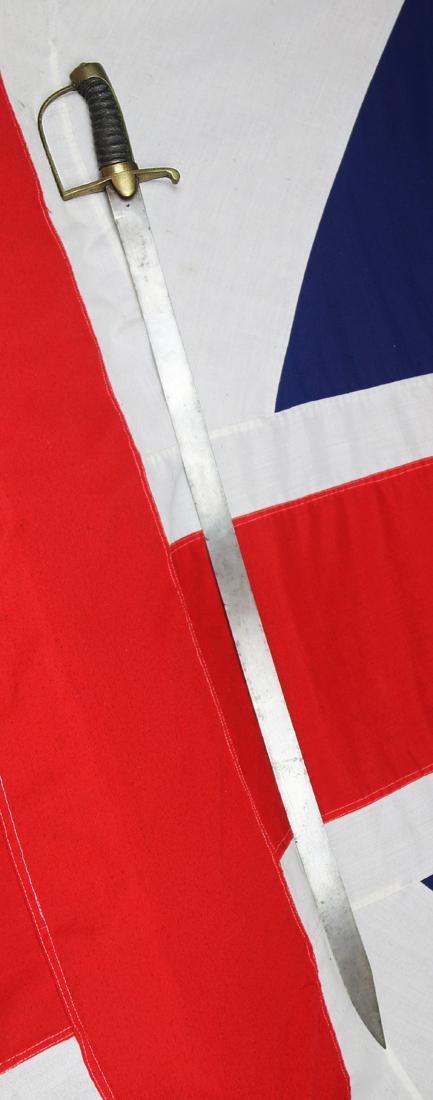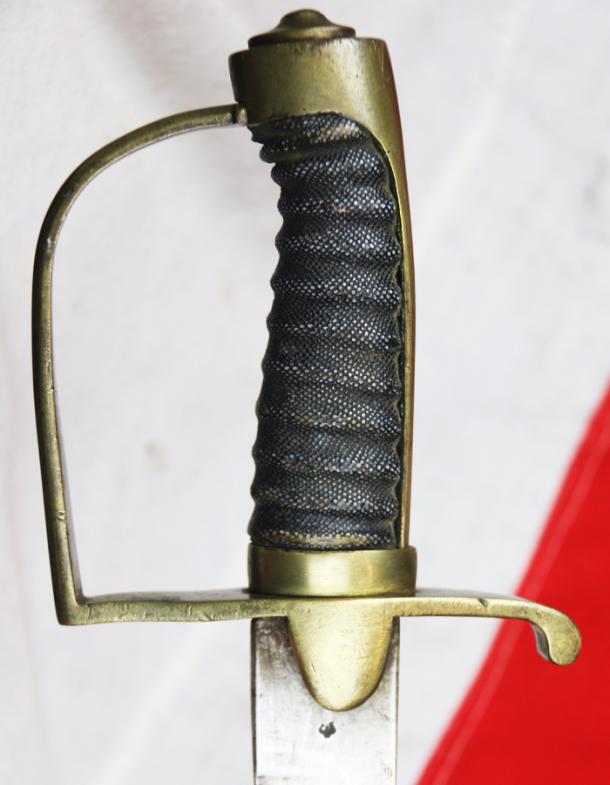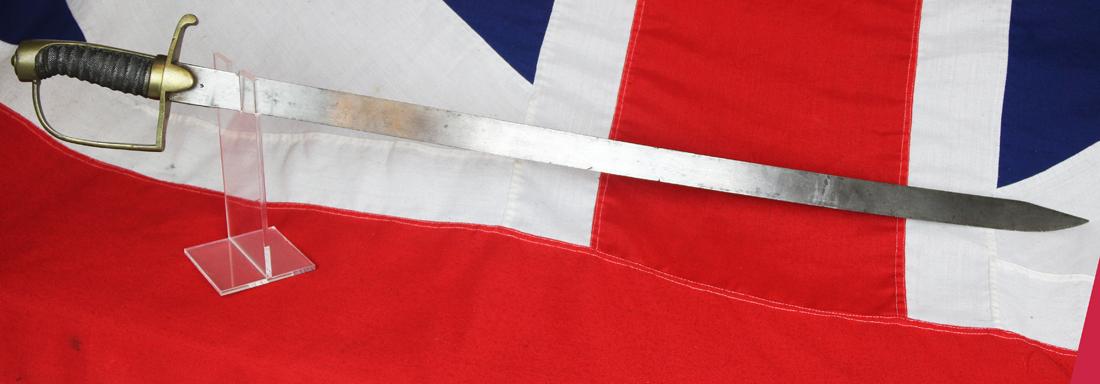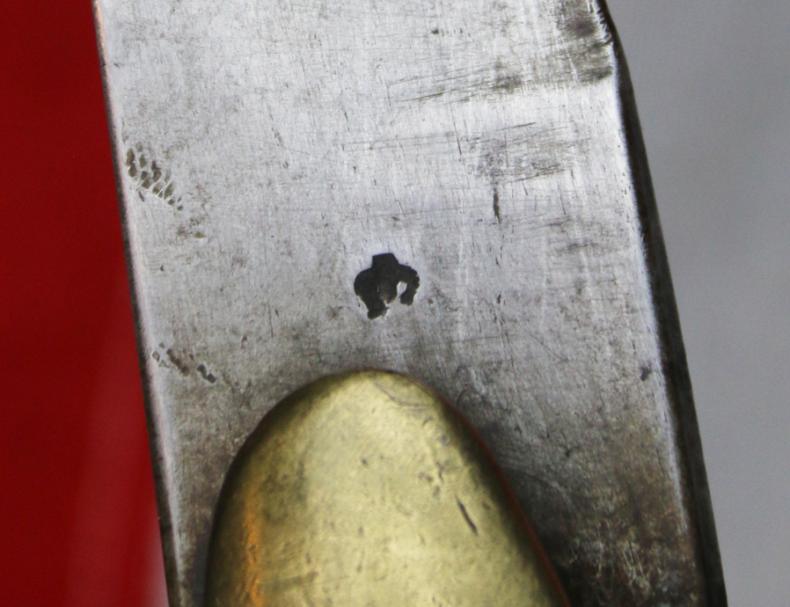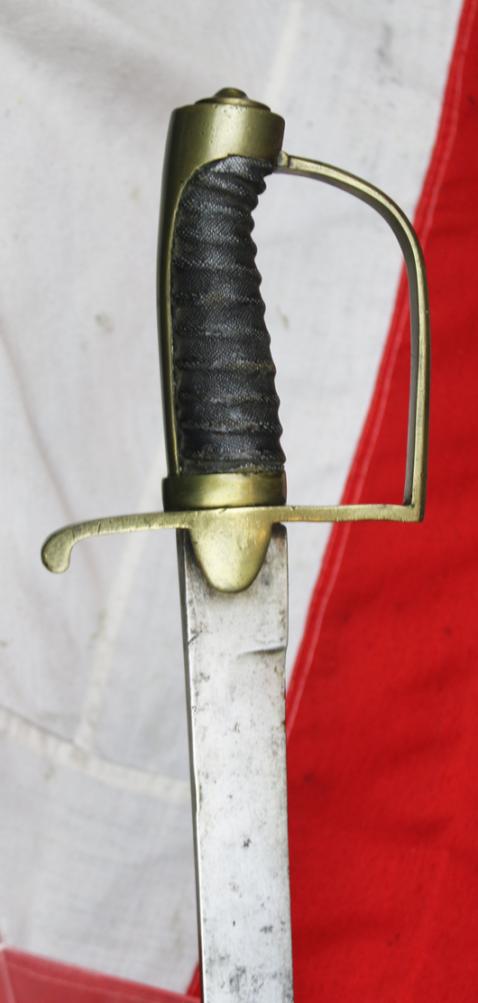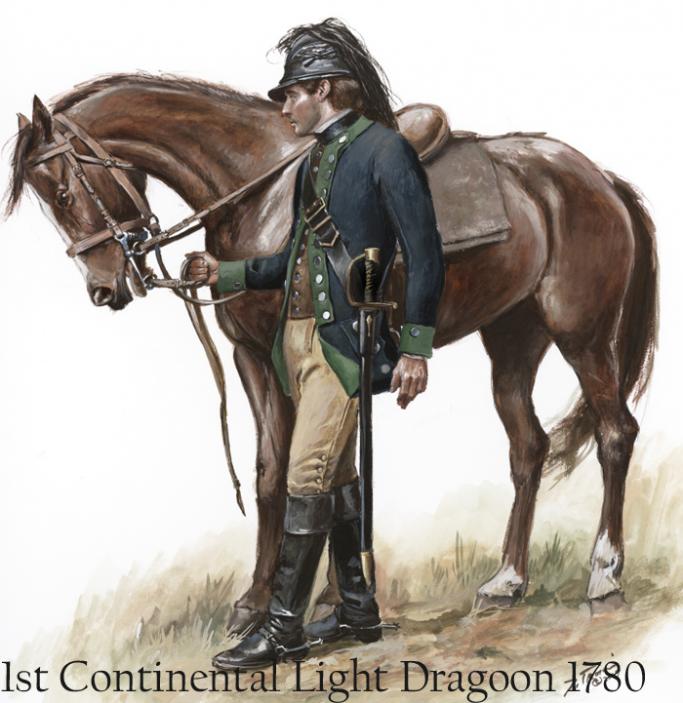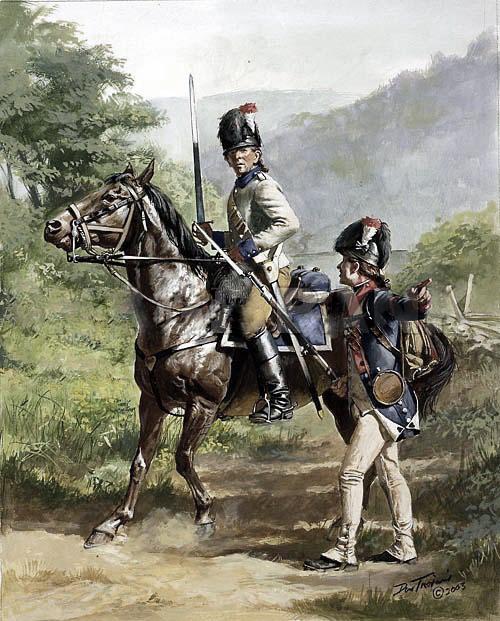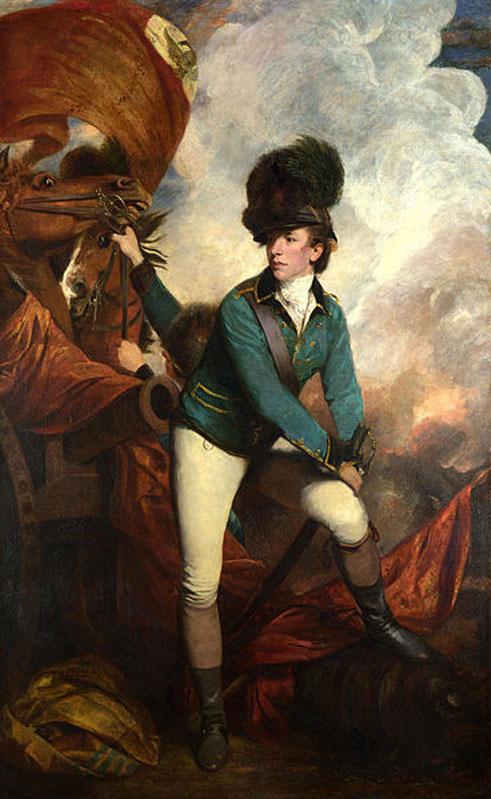A Very Rare American War of independence Era 1773-1780 British Light Dragoon Officer's Sword. Originally Purchased from The Tower of London Collection by A Private Collector Nearly 50 Years Ago
One of the rarest swords of the American Revolutionary War cavalry of both protagonists to exist today. This superb sword was formerly in the world renown Tower of London collection, [see photo plate 70 D in "European Swords and Daggers in the Tower of London" by Arthur Richard Dufty Master of the Armouries].
Although practised no longer by the Tower of London Executors, during the past two centuries, on just a very few occasions, the Tower of London has sold a few items by auction in order to facilitate an influx of funds for new acquisitions
Not a sword of particular elegance, for this was designed to do a very specific task for an 18th century cavalryman, and it did it well. Brass stirrup hilt now very finely and naturally heavily patinated, through age, and a very long clipped back blade. It has all its original fishskin bound grip. This English sword is most rarely seen, with very little known of it's design origins, although it does clearly have its ordnance crown inspection stamp on the blade, and as very few remain in existance it rarely appears photographed in many reference books on British/American swords of the American Revolutionary War or War of Independence as it is also known. This fine and rare example was sold from the 'Tower of London Collection' in 1973 at Christie's.
Little or no documentation on its original ordnance order, made some 250 years ago, regarding its manufacture, exists. What is known however, is that it is estimated it was made from 1773, but possibly slightly earlier, and it was replaced by the more abundant 1788 pattern version. That replacement 1788 sword is far more well recorded, and fair number of that type survive. A very few examples of this sword are kept in just a few, select American museums, that contain the military collections of captured British weapons, and also those used by former American born British officers that moved over to serve in the new American Continental Army Light Dragoons under George Washington in the American Revolutionary War. We show two paintings of American Continental Dragoons using this pattern of sword. In our conversations in the 1980's with the eminent Howard Blackmore, Assistant Keeper of Weapons at the Tower of London, he believed these cavalry swords, when they surfaced, were possibly one of the most interesting of swords used in the Revolution in America, in that they were used by officers of both sides, but sadly so few survived the war itself that they are now considered to be one of the rarest swords of their type to exist. These swords were originally made for, and used by, the British Light Dragoon Regiments, including the infamous and well recorded through history 'Tarleton's Green Dragoons'. Banastre Tarleton was originally a young British officer of the 1st Dragoon Guards, who purchased his rank of cornet. He proved to be such a gifted horseman and leader of troops, due to his outstanding ability alone, he worked his way up through the ranks to Lieutenant Colonel without having to purchase any further commissions.
In December 1775, he sailed from Cork as a volunteer to North America where rebellion had recently broken out triggering the American War of Independence. Tarleton sailed with Lord Cornwallis as part of an expedition to capture the southern city of Charleston. After this failed, he joined the main British Army in New York under General Howe. His service during 1776 gained him the position of a brigade major of cavalry. After becoming the commander of the British Legion, a mixed force of cavalry and light infantry also called Tarleton's Raiders, he proceeded at the beginning of 1780 to South Carolina, rendering valuable services to Sir Henry Clinton in the operations which culminated in the capture of Charleston. This was part of the 'southern strategy' by which the British directed most of their efforts to that theater hoping to restore authority over the southern colonies where they believed there was more support for the crown. On 29 May 1780, Tarleton, with a force of 150 mounted soldiers, overtook a detachment of 350 to 380 Virginia Continentals led by Abraham Buford. Buford refused to surrender or even to stop his march. Only after sustaining heavy casualties did Buford order the surrender. What happened next is cause of heated debate. According to American accounts, Tarleton ignored the white flag and mercilessly massacred Buford's men. In the end, 113 Americans were killed and another 203 captured, 150 of whom were so badly wounded that they had to be left behind. Tarleton's casualties were 5 killed and 12 wounded.6 The British called the affair the Battle of Waxhaw Creek, while the Americans called it the "Buford Massacre" or the "Waxhaw Massacre." In recounting Tarleton's action at the scene, an American field surgeon named Robert Brownfield wrote that Col. Buford raised a white flag of surrender, "expecting the usual treatment sanctioned by civilized warfare". While Buford was calling for quarter, Tarleton's horse was struck by a musket ball and fell. This gave the loyalist cavalrymen the impression that the rebels had shot at their commander while asking for mercy. Enraged, the loyalist troops charged at the Virginians. According to Brownfield, the loyalists attacked, carrying out "indiscriminate carnage never surpassed by the most ruthless atrocities of the most barbarous savages." Tarleton's men stabbed the wounded where they lay. In Tarleton's own account, he virtually admits the massacre, stating that his horse had been shot from under him during the initial charge and his men, thinking him dead, engaged in "a vindictive asperity not easily restrained." However there are strange contraditions as to Tarleton's behaviour, for, contrary to his nature, as described by his conduct at Monticello, Thomas Jefferson himself later noted,
"I did not suffer by him. On the contrary he behaved very genteely with me. … He gave strict orders to Capt. Mcleod to suffer nothing to be injured." Tarleton materially helped Cornwallis to win the Battle of Camden in August 1780. He was completely victorious in an engagement with Thomas Sumter at Fishing Creek, aka "Catawba Fords", but was less successful when he encountered the same general at Blackstock's Farm in November 1780. Then in January 1781, Tarleton's forces were virtually destroyed by American Brigadier General Daniel Morgan at the Battle of Cowpens. Tarleton however managed to flee the battlefield with perhaps 250 men. Although Tarleton had a deservedly dastardly reputation, many other Light Dragoon forces were commanded by far more respected and gentlemanly officers, and the troops under their command fought in the most formative conflicts of both American and British history. A war that shaped the whole world that followed it, arguably more than any other war before it. Although in terms of casualties, fewer men perished in the whole war of Independence, that covered several years, than in a single day during the Battle of Gettysberg, less than 100 years later in the Civil War. This sword has a 35 inch blade. No scabbard, for we have never even seen a surviving original scabbard for such a rare sword. This is probably only the second such surviving examples we have had in around 30 years.
Code: 23377
3450.00 GBP

